Intel 4004 microprocessor: description, specifications. Processor History
Federico Fagin has joined Intel to turn Ted Hoff's vision into a silicon reality. Less than a year later, he and his team created the 4004 microprocessor, which was introduced in November 1971. Fagin's first major challenge was developing a methodology for using the new silicon gate technology. This allowed us to create complex circuits in a different way. Since no one had done anything like this before, I had to start everything from scratch. And Federico Fagin succeeded - he independently developed the chip in just 9 months in 1970. This is a fantastically short time compared to the Intel processors of the next generations. For example, it took 100 man-years to create a 32-bit chip.
Design
The silicon gate design created by Federico Fagin made the first microprocessor a reality in 1971. It was unusual, as integration of such complexity had never been achieved before. Faggin was able to develop the Intel 4004 processor only because of his innovations in MOS manufacturing technology. Bootstrap and hidden contact became the ideas that formed the basis of the design methodology he pioneered, saved the Hoff architecture and implemented it in 1970. Without this, it would not have been feasible , because the result would be too slow and expensive to be of practical use. Thus, the invention did not consist in the development of a simple CPU model, which was not lacking at that time, but in the creation and implementation of a technology that for the first time made it possible to place all the functional blocks of a processor on a single chip.
Ted Hoff hoped that his proposed architecture and instruction set could be placed on the same chip. However, he could not evaluate the feasibility of the project or implement it, since he was not an MOS developer. It was Federico Fagin who invented the design and layout of 2,300 arbitrary logic transistors on a chip that was only 3x4mm, inexpensive, 5x the speed, and doubled the element density of then-existing MOS technology.
Fagin's methodology was a breakthrough and was used in all of the company's early microprocessors. An Italian engineer led the project to a successful conclusion and played a role in promoting Intel's new processor, demonstrating to company management that the chip could be used for more than just calculators.
Specifications
The Intel 4004 processor specifications are as follows:
- Crystal area: 12 mm 2 .
- Maximum clock frequency: 740 kHz.
- Cycle time: 10.8 µs (8 cycles / instruction cycle).
- Command execution time - 1 or 2 command cycles (10.8 or 21.6 µs), 46300-92600 commands per second.
- Adding two 8-digit numbers (32 bits each) takes 850 µs, i.e. 79 instruction cycles, about 10 cycles per decimal digit.
- Separate storage of programs and data. Unlike designs based on separate buses, the 4004 has one multiplexed 4-bit bus to carry 12-bit addresses, 8-bit instructions, and 4-bit data words.
- Direct addressing 51220 bits (640 bytes) of RAM organized as 1280 4-bit "characters" of which 1024 represent data and 256 represent status.
- Direct addressing 32768 bit ROM (4096 bytes).
- A set of 46 commands (of which 41 are 8 bits wide and 5 are 16 bits wide).
- 16 registers of 4 bits.
- Internal subroutine stack 3 levels deep.

Busicom order
Used as a calculator in the 1950s and 1960s, the stored program computer was one of the finest achievements of the post-war era and was familiar to all engineers working in the semiconductor industry.
In 1969, the Japanese calculator manufacturer Busicom approached Intel to implement their logic design for a series of calculators in silicon. Their approach replicated the implementation of Olivetti's Programma 101, the world's first desktop programmable calculator, presented at the New York World's Fair in 1965 and went on sale the same year. The Programma 101 had a CPU (central processing unit) and sequential reading and recording, which were made from discrete components.Busicom proposed a similar architecture that included the implementation of the processor on three MOS chips, ROM and register on two more, with two other I / O chips.
MCS-4 architecture
Applied Research Lead Ted Hoff acknowledged that Busicom's design challenge was the use of serial memory, and as Intel was developing its first dynamic RAM (Random Access Memory), he saw that the design could be greatly simplified using a traditional and more versatile computer architecture based on on RAM. With the help of Stan Mazor and interaction with Busicom engineers, which included Masatoshi Shima, Hoff formulated the MCS-4 architecture, reducing the design from 7 to 4 chips. Hoff believed that the CPU could be implemented in a single 4-bit microprocessor, but neither he nor Mazor were MOS designers, and Intel did not have specialists capable of creating complex ICs with an arbitrary logical structure. Therefore, Hoff's proposal was idle for about 6 months, until Federico Fagin was hired in April 1970, who led this project.
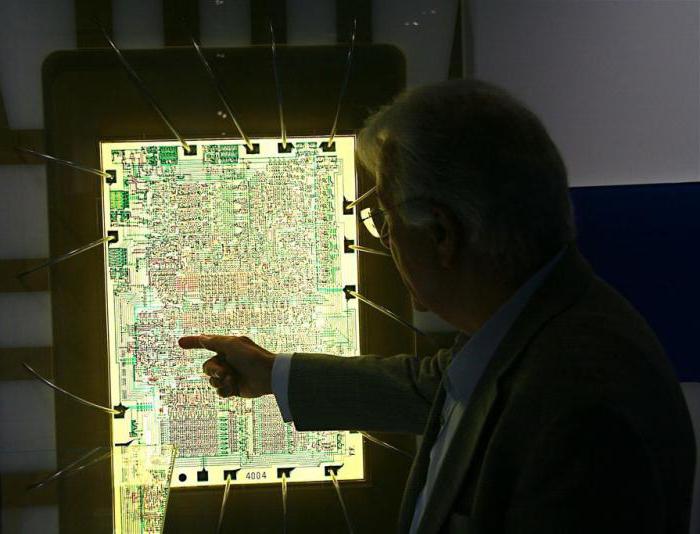
innovative technology
Federico Fagin came to Intel from Fairchild Semiconductor, where in 1968 he developed the silicon gate MOS technology and based it on the world's first commercial integrated circuit, the 3708. The technology was adopted by Intel and subsequently by the global semiconductor industry, and within 40 years was the basic structure used in almost all microcircuits. co-founder of Intel, admitted that this step was a major component of its early success. Silicon gate MOS technology provided the competitive performance of the Intel 4004: the chip was about 5 times faster, had 100 times less junction leakage, and accommodated 2 times more arbitrary type logic transistors compared to a chip of the same size made with aluminum gates, and dissipate equal power. This enabled the creation of the first commercially successful dynamic RAMs, CCD (Charge-Coupled Device) image sensors, non-volatile memory devices, and microprocessors. For the first time in history, a processor contained all the components of a general purpose computer.
Creating a new design and layout
Tad Hoff was not a MOS circuit designer. His role was to create the architecture and further support the products. After defining a set of commands, the project was handed over to the MOS development team led by Federico Fagin. The work was carried out very quickly, and in about 9 months 3 main chips were created. The last of these, in January 1971, was the Intel 4004 microprocessor.
According to Stan Mazor, Fagin's merit was that he carried out the engineering design, and Hoff - in creating the original concept and architecture. Mazor himself was a kind of intermediary who helped as best he could and did what he could.
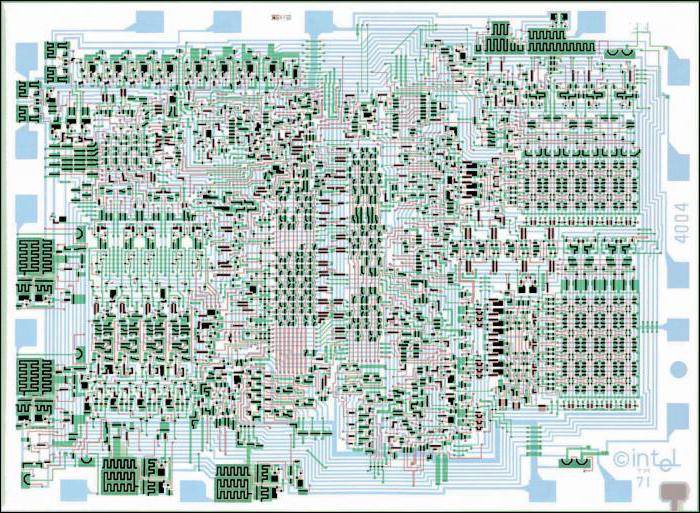
Federico Fagin developed a methodology for designing silicon gate MOS structures used in arbitrary logic circuits. This was necessary because the new technology required a different design, and especially layout.
According to Fagin, he decided that instead of designing the logic and then the circuit separately, they should be done together on one sheet. This should take into account the layout as far as possible, so that the conductors and transistors are located as close as possible to the final layout. Obviously, for this, it was necessary to carry out a general planning of the chip in advance in order to know the placement of various blocks. It was then that he specified the methodology for creating this type of circuits.
Designing the new Intel processor and leading the MCS-4 project from development to production could only be accomplished by someone who was able to innovate in process technology, chip layout, circuitry, logic design, and computer architecture. Fagin acquired such skills and knowledge through his education and work experience before joining Intel. After graduating from a technical university in Vicenza (Italy), he participated in the design and construction of a small transistorized experimental computer with magnetic core memory at Olivetti in Borgolombardo (Italy) at the age of 19. He then graduated summa cum laude from the University of Padua and went into MOS technology development, building 2 commercial ICs while working at SGS-Fairchild (now ST Micro). In 1968, he was assigned to Fairchild Semiconductor R&D in Palo Alto, California, where he developed silicon gate MOS technology, etc.
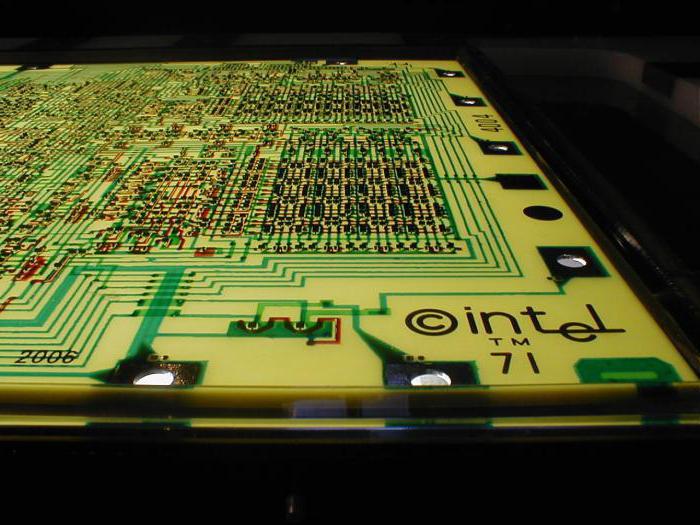
Real innovation
The conceptualization of the first processor, which was Hoff's main contribution to the 4004 project, also took place at other companies. Several groups independently reached the same conclusion. Therefore, the main thing in the invention of the microprocessor was the creation of an economically viable product. Only one person in the world knew how to take the next step and translate architecture into working design. It was Federico Fagin. Without him, the first microprocessor would never have been built. Back at Fairchild, he invented the technology that formed the basis of future devices. After starting work at Intel, he corrected the missing Hoff and then made the first Intel 4004 chip, after which he led the development of the 8008 and was the main architect of the 8080.
At that time, engineers knew how to build small computers, do CPU logic design, and create programs. The idea of a microprocessor, that is, of placing a universal computer on a single chip, was also in the air. Some architectures have already been implemented on several MOS ICs. However, no one knew how to fit 2,300 arbitrary logic transistors—the minimum required for a simple processor—into a chip small enough to manufacture cheaply, run fast, and dissipate enough power to fit in existing packages.
Thus, the real innovation in the microprocessor was its packaging on a single silicon chip, since everything else had been done before. And Fagin succeeded without any significant help from Ted Hoff and Stan Mazor.
The only one who helped him was Busicom engineer Masatoshi Shima. He came to Intel to check on the progress of an order a couple of days after Fagin was hired. He realized that no progress had been made in the previous 6 months. Given the delay in the project and the absence of any Intel engineer available to help, Sima was allowed to stay for 6 months to speed things up. However, he knew little about and although he was very helpful, all the creative decisions were made by Fagin. The latter's boss, Leslie Vadash, was so preoccupied with the design of the 1103 (the first 1024-bit DRAM that was considered the future of Intel) that he could not provide technical control over the MCS-4 project. After the success with the 4004, Fagin led the implementation of the 8008 and also conceived and defined the architectures of the most successful of all early processors, the 4040 and 8080.
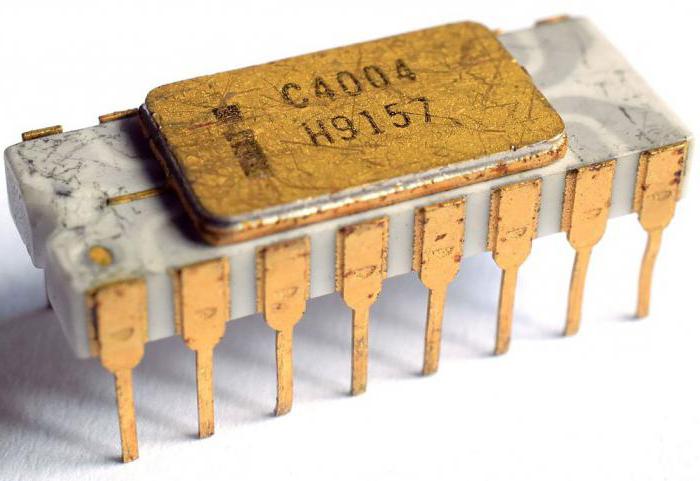
Developer doubts
According to Stan Mazor, he and Ted Hoff thought the Intel 4004 was too aggressive. They weren't sure if it could be made, so they started with another chip called 4005. It was a joint project with MIL, which partnered with Intel in Canada. They defined a much simpler architecture than the 4004. A Canadian company was to develop the chip and Intel would provide the memory. It turned out that she could not do 4005.
Hoff and Mazor were unsure about the feasibility of the 4004 in 1994. That's why, a few months after Fagin joined Intel, they created a simpler 4005 architecture and gave it to the Canadian company MIL for development. But MIL engineers failed to make a microprocessor. It became clear that even the creation of a simple chip was far from routine work. In addition, Hoff and Mazor doubted that the 4004 would be useful for applications other than calculators, cash registers, and the like. They thought that only the 1201, and later the 8008, would have a sufficiently versatile architecture to be used in a variety of applications. After the completion of the 4004 project, Fagin demonstrated that the microprocessor could be used in various control systems and encouraged management to bring the Intel 4004 to market.
Failures with 8008
Another example of how necessary Fagin's methodology was is the Intel 8008, which was originally designed by the Computer Terminal Corporation (CTC). Work on the chip, originally named 1201, began before Fagin joined Intel, but the project, assigned to an arbitrary-logic processor designer who came over from General Instrument, didn't get very far because any methodology and libraries were missing at the time. schemes. Work on the 8008 was suspended and resumed only in the year of release of Intel 4004.
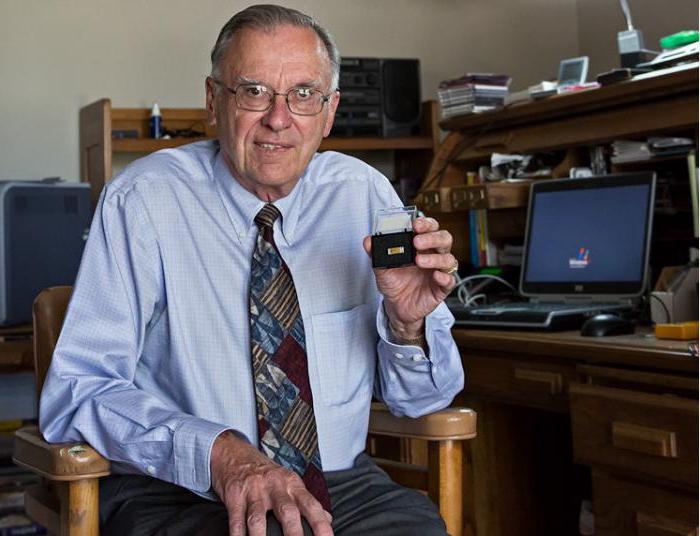
TI microprocessor
Another example is the first single-chip CPU, which was the second source for the 8008s ordered by CTC from Texas Instruments. Announced in the press in mid-1971, only a few months after the successful creation of the 4004, this processor never ran and was never sold. It was created using metal gate MOS technology by a company that had many years of experience in designing complex arbitrary logic ICs. Compared to the Intel 8008 processor, the TI chip was twice the size, providing the same functionality. The operating speed and power dissipation have never been made public.
An example to follow
After the 4004 project was completed, other engineers both inside and outside Intel were able to study Fagin's methods by examining the design under a microscope. This same style was used in all other early Intel and Zilog microprocessors.
Finally
The 4004 was the very first silicon gate processor in history. It was the most advanced integrated circuit of the time. Its creation required not only extraordinary creativity and skill from the designer, but also a deep knowledge of the new technology that only its developer could have. In addition, a project that needed to be completed in 10 months due to previous outstanding commitments to the client required a lot of courage, motivation, management skills and steady hard work to successfully complete the project.






